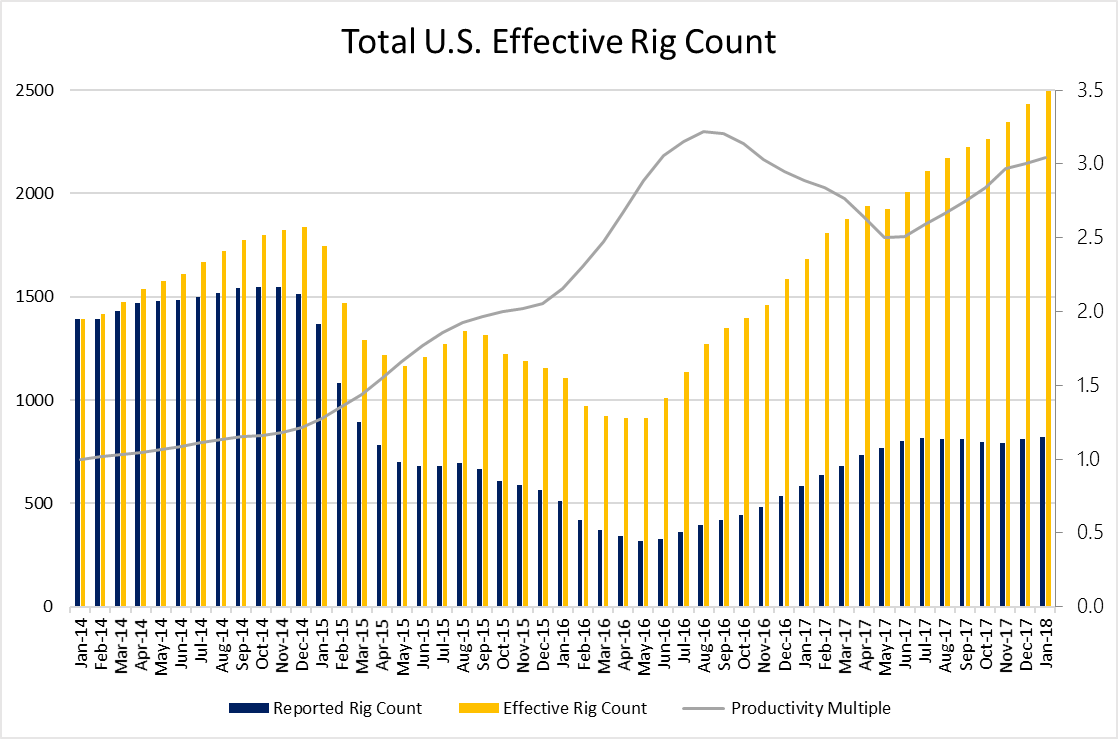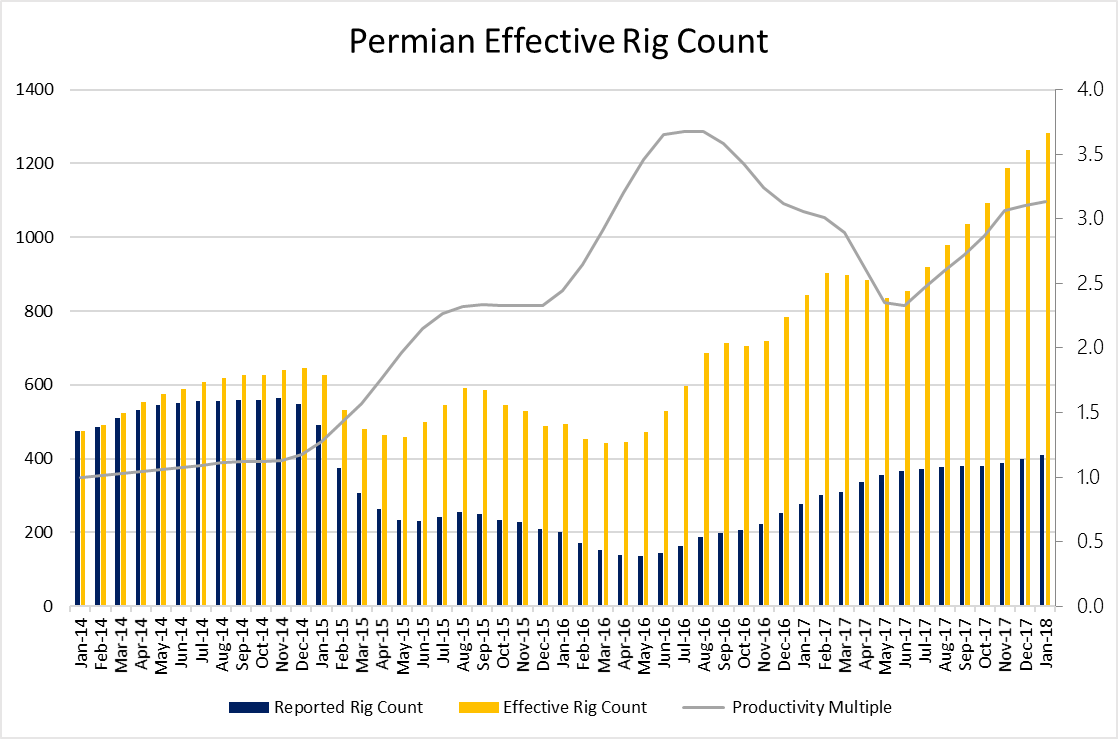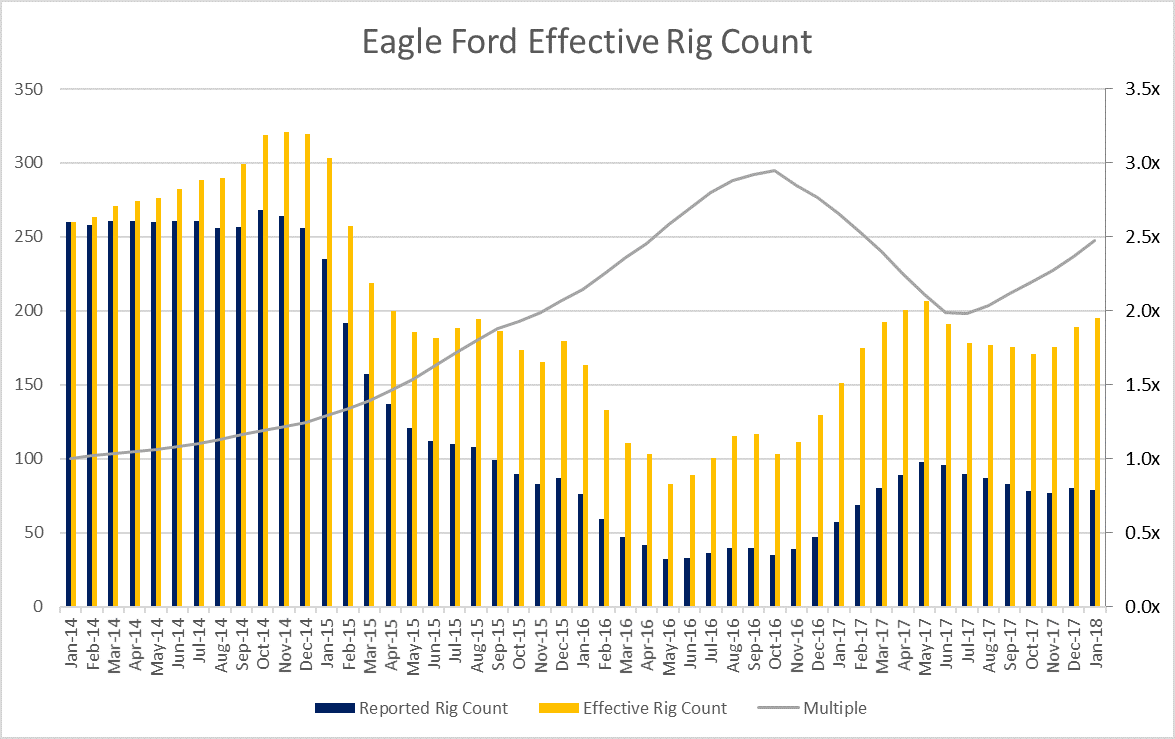Improvements in rigs, rapid pace for pad drilling, more pumping horsepower and higher efficiencies boost effective rig count to 2,495 rigs
EnerCom has released the latest Effective Rig Count, examining the state of drilling activity in major shale basins.
The Effective Rig Count continues to rise, and is now approaching 2,500. There are currently 2,495 effective rigs in the U.S., up from 2,435 rigs in December. Improvements in efficiency and reported rig count each contributed to this month’s improvement.

Efficiencies are now approaching mid-2016 levels, with modern rigs producing more than three times as much production as rigs from January 2014. This degree of efficiency is impressive, as when operations were at this level in mid-2016, most companies were utterly focused on efficiency. In most basins, for example, the DUC count was falling as completions outpaced drilling. Activity has since increased significantly, with DUC counts rising in most basins. This means completions have not caught up, and drilled wells are not immediately being brought on to production. Per-rig productivity is near record levels despite this handicap, meaning efficiencies have improved significantly.
Permian accounts for 51% of total ERC
The Permian remains the most important basin in terms of Effective Rig Count, with 1,283 effective rigs currently active, or over half of the total in the U.S. While increases in efficiency have slowed somewhat, rigs in the basin are still more than 3.1 times more active than Permian rigs in January 2014.

As it did last month, the Eagle Ford saw the largest efficiency gains this month. Rigs in the basin are now yielding 2.5 times as much production as rigs in the basin in early 2014, compared to 2.4 times last month. There are now 195 effective rigs in the basin, compared to a reported rig count of 79.

U.S. will add just under 250 MBOEPD from February to March
The EIA predicts that the country’s gas production will increase significantly in the next month, rising by 832 MMcf/d from February to March. This growth will be driven primarily by Appalachia, which will add 321 MMcf/d. The Permian and Haynesville are close behind, with a combined 405 MMcf/d of growth. The only basin to see production decrease is the Anadarko, which the EIA predicts will decrease by 31 MMcf/d.
Unsurprisingly, the Permian dominates oil production growth, with output rising by 75 MBOPD. The Eagle Ford will also see oil output rise, growing by 18 MBOPD. In total, the U.S. is predicted to add 110 MBOPD in oil production from February to March.
Permian DUCs up by 112, Niobrara DUCs continue to fall
The number of drilled uncompleted wells continues to rise, though not at the rate seen last month. The EIA estimates there are now 7,609 DUCs in the major shale basins, up from 7,488 in December. This month’s increase in DUCs is almost entirely due to two basins, the Permian and Eagle Ford, which added 112 and 33, respectively. Most other basins saw DUC counts remain essentially flat, but the Niobrara saw counts significantly decrease. The basin completed 23 more wells than were drilled in January, continuing a recent trend of falling DUC counts. The number of drilled uncompleted wells has fallen by more than 100 since July, by far the largest decrease in that period.






